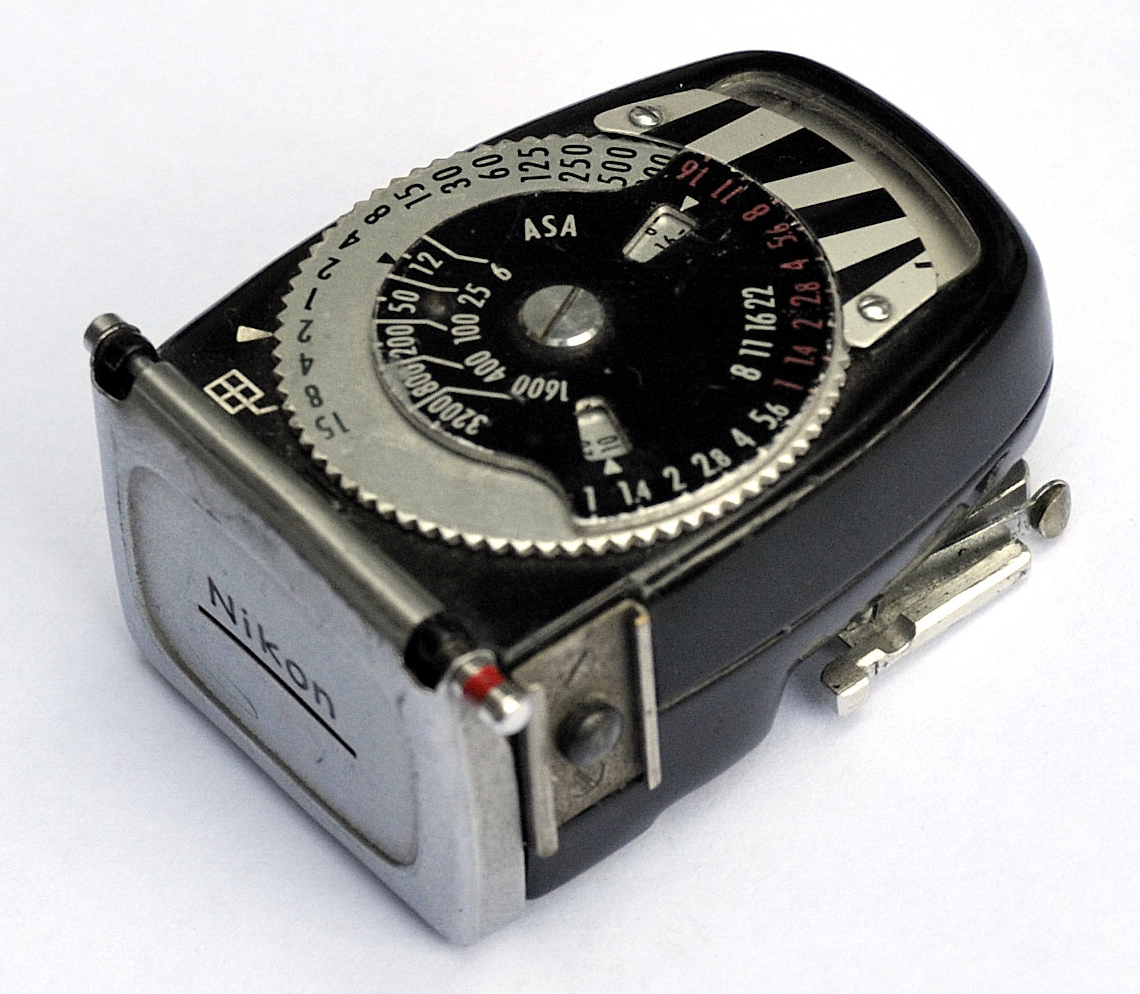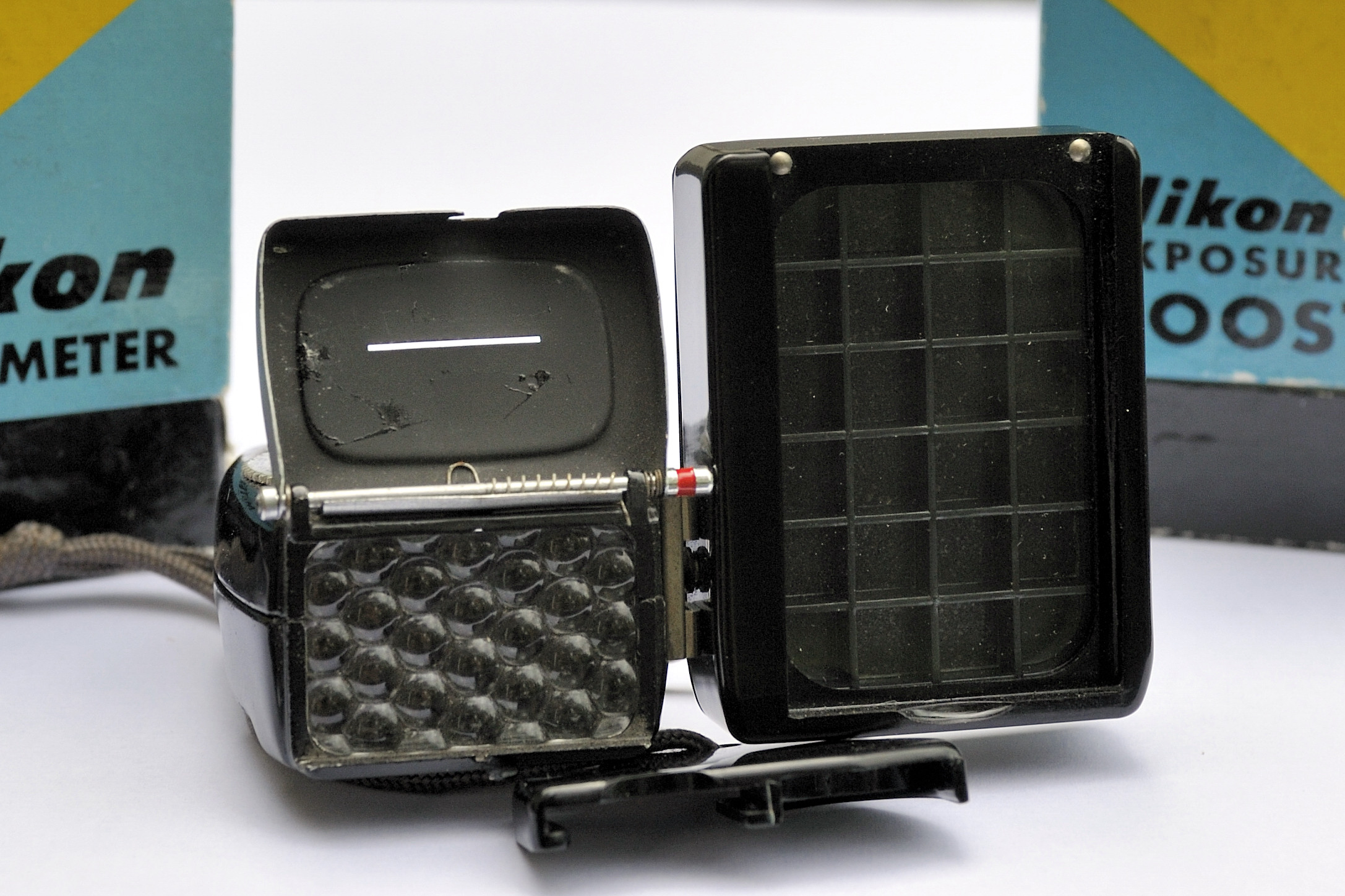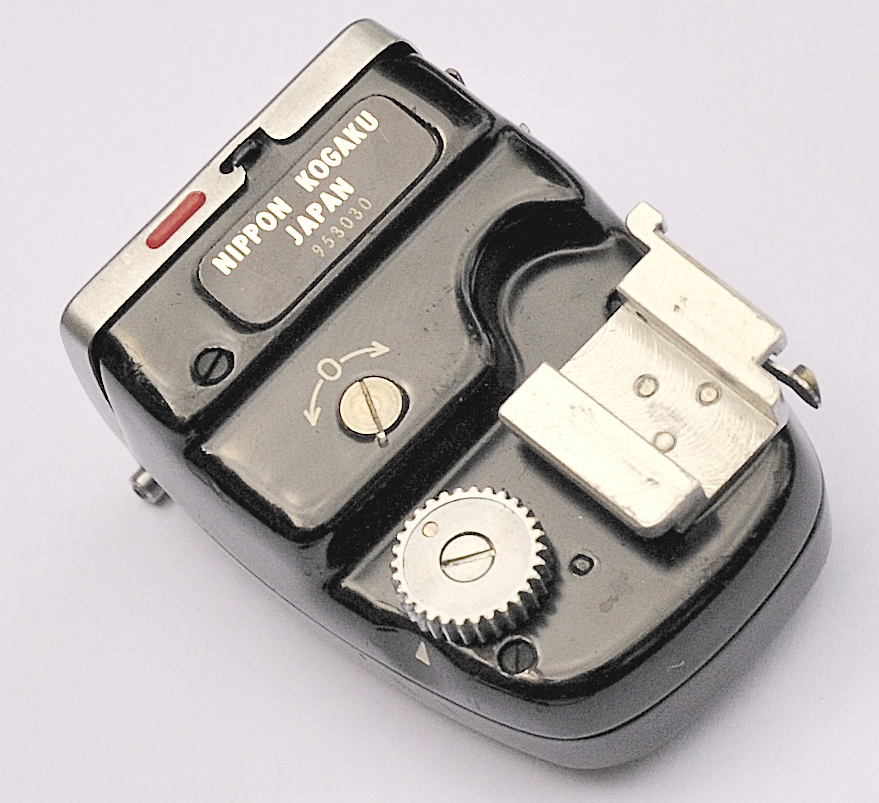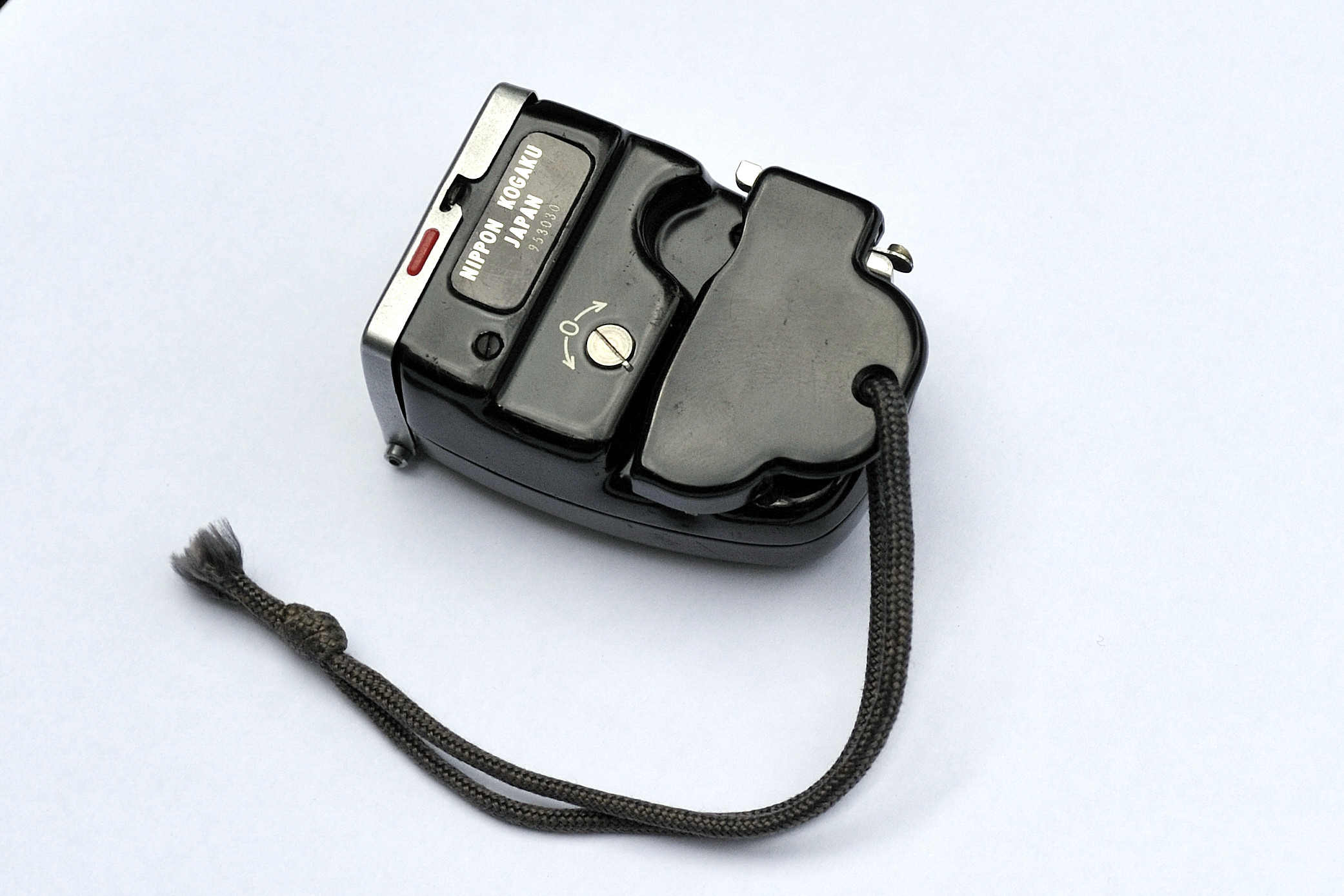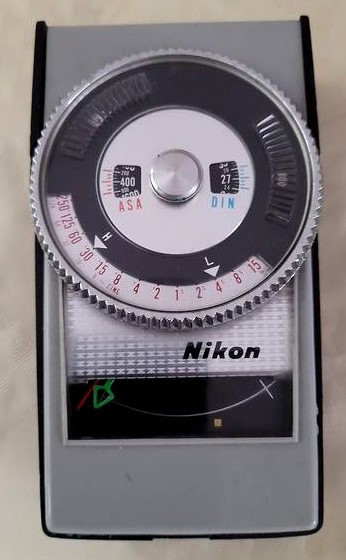Nikon exposure meters
Nippon Kogaku K.K., as Nikon Corporation was called from its start, did not produce exposure- or light meters for its Nikon rangefinder cameras until the introduction of the Nikon SP in late 1957. Two versions were offered by Nikon (see below): a handheld exposure meter (for the Nikon rangefinder cameras) and a clip-on exposure meter (for the Nikon F and Nikkorex cameras). The handheld exposure meter was a copy of the Sekonic* L8, which was - again - a copy of the well-known Weston** exposure meter.
Both meters were using selenium*** as a light-sensitive element. Both exposure meters can be used with a booster (see below), to extend meter capacity by approx. 3-4 times. BTW: all Nikkorex cameras with a non-exchangeable lens had a built-in selenium exposure meter.
All Nikon exposure meters have a selenium cell behind the window (see above) with a lid to lift under low light conditions. In the accessory shoe of the exposure meter an additional booster can be placed.
Next to the shoe, that fits into the accessory shoe of the camera, you'll see the serrated wheel which will lock into the serrated shutter speed selector of the camera. A separate (and very rare) cover can be used to wear the exposure meter around your ..............(whatever). The Nikon SP was the first Nikon rangefinder camera with a non-rotating shutter speed dial. Thus making it possible to couple the exposure meter with the shutter speed dial. When inserting the handheld exposure meter from the front (!) into the accessory shoe a little serrated wheel (see above) under it will make contact with the serrated shutter speed dial. After that both the meter and the shutter should be set at the same speed and - by rotating - the proper film speed (ASA) can be chosen. The sensitivity range is 6 - 800 ASA and later models up to 3200 ASA.
With the introduction of the Nikon F in 1959 Nikon offered a clip-on exposure meter (see above Model III). By two clips the meter can be attached to the front plate and will couple with the lens in use and the shutter speed dial. ASA range 6 - 4000. Collectors distinguish three models: Model I and Model III are almost identical, Model II has a larger selenium window and no booster attachment rail. Model III also exist with 'Nikkor' engraving to avoid a row with Zeiss-Ikon on the German market. The Nikkorex exposure meter is almost identical to the Model II. It will slide into the accessory shoe on the front of the Nikkorex F cameras. After the introduction in 1962 of the Photomic viewfinders with built-in exposure meters the clip-on meters became unpopular. Nikon Corporation never produced any exposure meter since. Although...........................
...........for a special Nikon macro kit Nikon offered a handheld exposure meter (see above), probably made by Sekonic. Nowadays rather rare. Nikon Corporation did not make exposure meters for the Nikonos underwater cameras. But it did make a plastic underwater housing for exposure meters of the Sekonic Lumi-Series. See the Nikonos chapter for more info. *Sekonic aka Seiko Electric Industries, Japan started in 1951 to produce exposure meters. ** Weston, founded by Edward Weston (1850-1936) who invented his first exposure meter in 1888. *** selenium is a photovoltaic chemical element discovered in 1817 by the Swedish chemist Jöns Jakob Berzelius (1779-1848).
|
